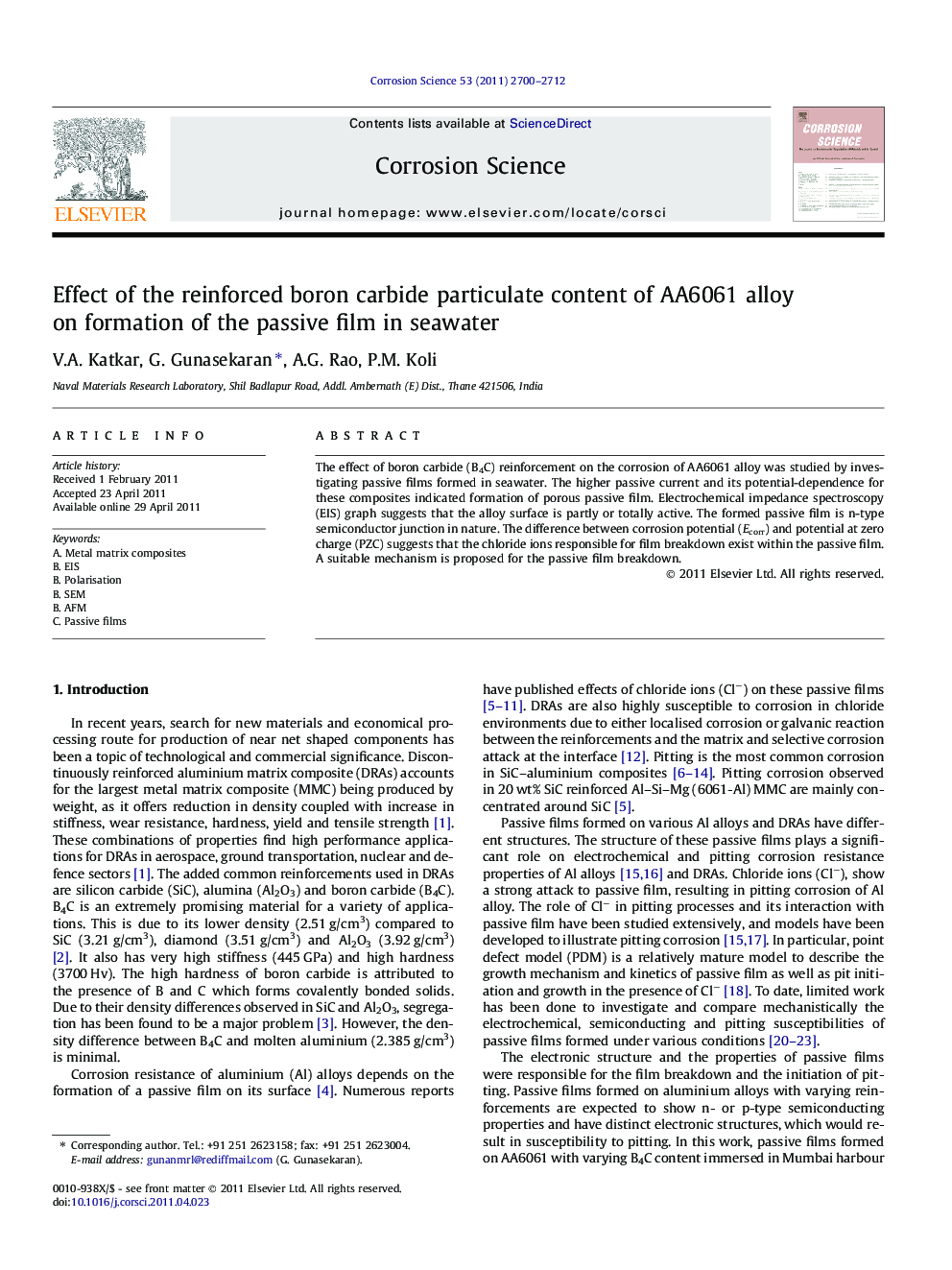| Article ID | Journal | Published Year | Pages | File Type |
|---|---|---|---|---|
| 1469950 | Corrosion Science | 2011 | 13 Pages |
The effect of boron carbide (B4C) reinforcement on the corrosion of AA6061 alloy was studied by investigating passive films formed in seawater. The higher passive current and its potential-dependence for these composites indicated formation of porous passive film. Electrochemical impedance spectroscopy (EIS) graph suggests that the alloy surface is partly or totally active. The formed passive film is n-type semiconductor junction in nature. The difference between corrosion potential (Ecorr) and potential at zero charge (PZC) suggests that the chloride ions responsible for film breakdown exist within the passive film. A suitable mechanism is proposed for the passive film breakdown.
► Presence of boron carbide increases the corrosion rate of A6061 alloy in seawater. ► Increasing the B4C content decreases passive layer thickness. ► Passive films formed on A6061 and its B4C composites are n-type semiconductors.
